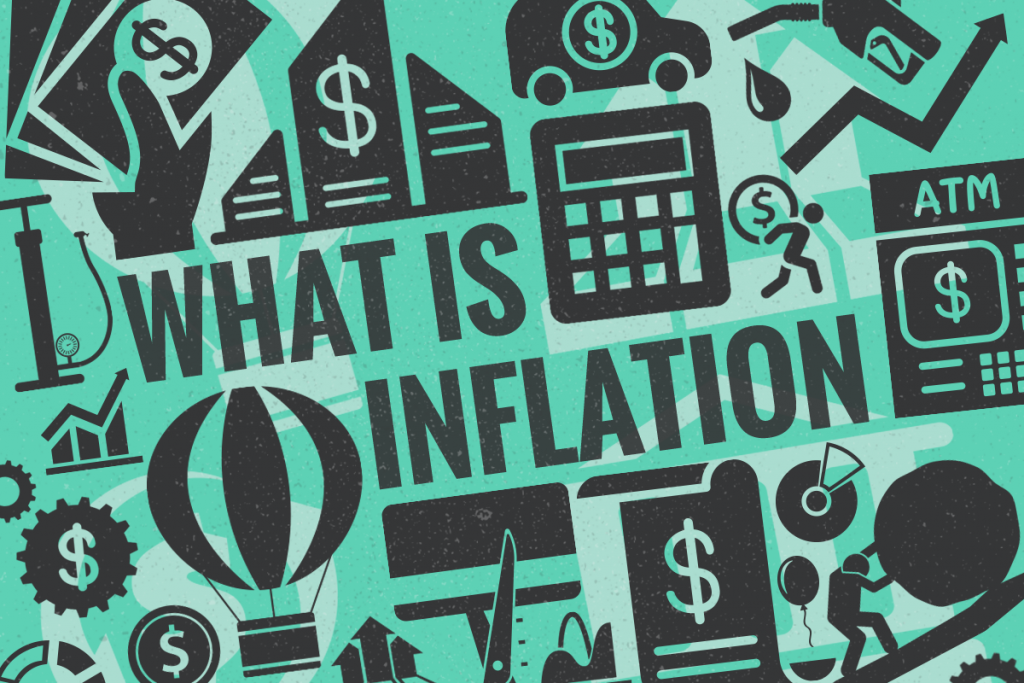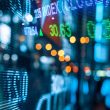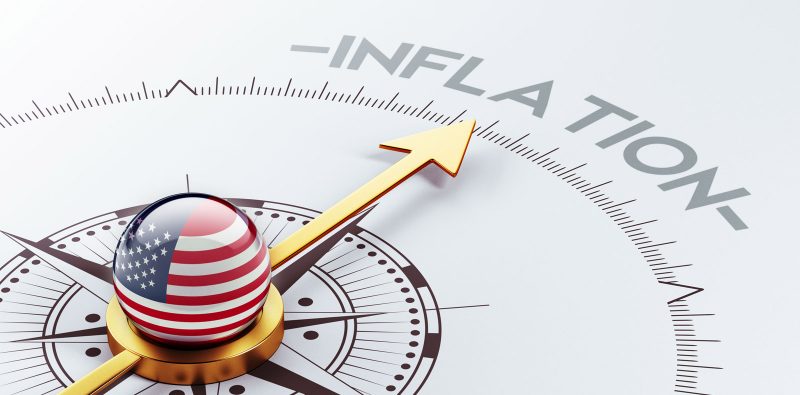What is inflation, and why is it so important to the outlook for the economy and Federal Reserve interest-rate policy?
You’ve probably observed that rates for some things, like college tuition, prescription drugs, and the lease for an apartment or condo, reliably increase essentially every year. Prices of other things, like a basic notebook computer, televisions, and not-so-fashionable clothing have tended to tip over time.
The Labor Department’s consumer price index determines the total modification in the price of items and services based upon an average individual’s budget plan. That presumes roughly 42% invested on housing, 14% on food, 9% on healthcare, 6% on energy– electrical energy, gas and fuel for your automobile, etc.
What Is Inflation?
Inflation is a general rise in the cost of products and services that wears down the value, or acquiring power, of the dollars in your wallet and checking account. The inflation rate is the percentage boost in prices over 12 months. The 2.3% rise in the customer price index in 2019 essentially implied that the purchasing power of $100 at the start of 2019 fell to $97.75 at the start of 2020.
Yet, rates fell at an unusual rate amid the coronavirus lockdown, specifically prices of energy, transport and garments. In the 12 months through November 2020, the inflation rate slipped to simply 1.2%.
Nevertheless, core consumer rates, which leave out more volatile food and energy rates, rose 1.6% over the previous 12 months.
Economic experts anticipate inflation to firm up in the coming months, as pandemic weakness subsides, however, near-term strength will not signify that the long stretch of tame inflation is ending.
The CPI determines prices on the customer level. The Labor Department’s producer price index tracks wholesale inflation based on costs paid by one business to another.

How The Fed Procedures Inflation
The customer cost index is the best-known inflation measure. But the Fed prefers a rather different procedure of rates, the Commerce Department’s individual usage expenses price index. The Fed’s inflation target likewise focuses on core costs, leaving out unstable food and energy expenses. In addition to rates paid straight by consumers, the PCE price index likewise considers expenses that are paid on behalf of customers, such as federal government compensation of medical facility expenses.
The Fed’s preferred core PCE price index tends to rise more slowly than the CPI. That’s partly because it has a smaller housing element. The PCE also factors in an alternative result, implying the propensity of customers to minimize their direct exposure to price hikes. When possible, they replace less-expensive purchases that are similar in nature. If coffee rates were to spike, individuals may drink more tea, for instance.
Core PCE prices increased 1.55% from a year ago in the latest month. That’s well below the Federal Reserves’ 2% inflation target.
What Are Inflation Causes?
Sometimes rates rise because demand goes beyond supply, permitting the seller to raise rates– and earnings.
Producers likewise may increase costs when they’re faced with a boost of their own. For example, Chipotle Mexican Grill( CMG) said it expected to raise prices 1.7% in 2019, after a 4% trek the prior year, amidst higher costs for beef and avocados.
Chipotle also tracked rates to balance out greater hourly wage hikes of 4% to 5%. Wages are a major company cost and can add to inflation when they are increasing. Before the coronavirus pandemic, incomes were growing because of state and local minimum wage hikes. And since employers had to pay more to maintain and attract quality workers at a time of low joblessness.
Chipotle Rate Walking Example
Chipotle’s price hike was an example of cost-push inflation. But businesses frequently try to restrict the cost boosts they pass on to customers by discovering methods to make their operations more efficient and their employees more efficient.
A cost boost will normally dampen the need somewhat. But when a cost hike nevertheless boosts income, companies are stated to have rate power.
In robust financial times, when salaries are rising nicely and people have more money at their disposal, more companies are likely to have pricing power. That’s why the inflation rate tends to be cyclical. It rises when the economy is zipping along and subsides when customers become less positive and more tightfisted.
How Does Inflation Impact Rates Of Interest?
The job of the Federal Reserve is to achieve low inflation and optimum sustainable work. In other words, the U.S. central bank is expected to keep the out of work rate as low as possible without setting off an upswing in inflation. The Fed has formally adopted a 2% yearly inflation target, and it primarily uses interest rates to achieve its goal.
When the Fed’s essential interest rate– the rate for overnight bank loans– is low, banks can offer more affordable loans to businesses and consumers, assisting the economy grow. By hiking its crucial rate, as it did nine times from 2015 through 2018, the Fed restrains growth by raising loaning expenses.
Why would the Fed want to slow development? After all, inflation has been tame for the past number of years, and many people expect it to stay that method. Mainly, policymakers stress over the economy overheating. Inflation is simply one of the signs that reveal excesses developing in the economy. Such excesses can turn a boom into an economic downturn like occurred with the Dot-Com and housing bubbles.

A Little Inflation Viewed As Healthy
A little inflation is viewed as healthy, but its costs start to install as inflation heads greater. When the worth of money deteriorates at a quicker pace, loan providers are making money back in more affordable dollars. So they should charge a greater rate of interest to make up for inflation, as well as for the risk of nonpayment. Retired people and those nearing retirement who have much of their savings in bonds that aren’t safeguarded for inflation are at threat of seeing the worth of their savings shrink when inflation gathers steam.
However the Fed stresses even more about deflation, a straight-out decrease in prices. Falling prices make it harder for debtors to repay loans. If prices are falling, customers also may postpone purchases to await still-lower prices.
The Fed has great deals of experience and success combating inflation with interest-rate walkings. However fighting deflation requires different sorts of tools since the Fed has never ever dropped its benchmark rates of interest below zero.
Fed Shift In Monetary Policy Reflects Low Inflation
After the Federal Reserve hiked its crucial interest rate to a series of 2.25% -2.5% in December 2018 and indicated a couple of more hikes to come in 2019, the stock market dived, triggering a Fed reassess.
By August 2019, the Fed had begun cutting its benchmark overnight financing rate, making quarter-point rate cuts in August, September and October. What triggered the Fed modification? In spite of some headwinds associated with the on-again, off-again China trade war, the economy was doing quite well by the majority of measures.
The unemployment rate, at 3.7%, wasn’t far above a 50-year low. Previously, when joblessness fell that low, the Fed braced for an uptick in inflation and typically acted preemptively to avoid it by treking its key interest rate. That’s more or less what occurred in 2018.
Major Shift In 2019
Yet in 2019, the Fed’s key gauge of inflation stunned policymakers. Instead of increasing inflation due to a tight labor market, inflation pressures alleviated somewhat. Policymakers grew worried that inflation appeared stuck listed below their 2% target. In an effort to anchor inflation expectations near 2%, and to minimize the danger of deflation, the Fed decided it needed to get inflation above 2% for a while.
All that occurred before the pandemic, which required the Fed to keep cutting its benchmark rate almost all the way to zero. In August 2020, the Fed explicitly altered its belief about the connection between inflation and low joblessness. Policymakers said they will no longer assume that a tight job market will fuel inflation. Even more, the Fed signaled it would hold back on any rate walkings up until inflation gets near to 2.5%. That may take numerous years.
That’s a big deal. It means that home loan rates and auto loans will be more affordable for longer. Without the Fed attempting to preempt a getting too hot of the economy, more individuals will get tasks and salaries will likely increase rather quickly.









